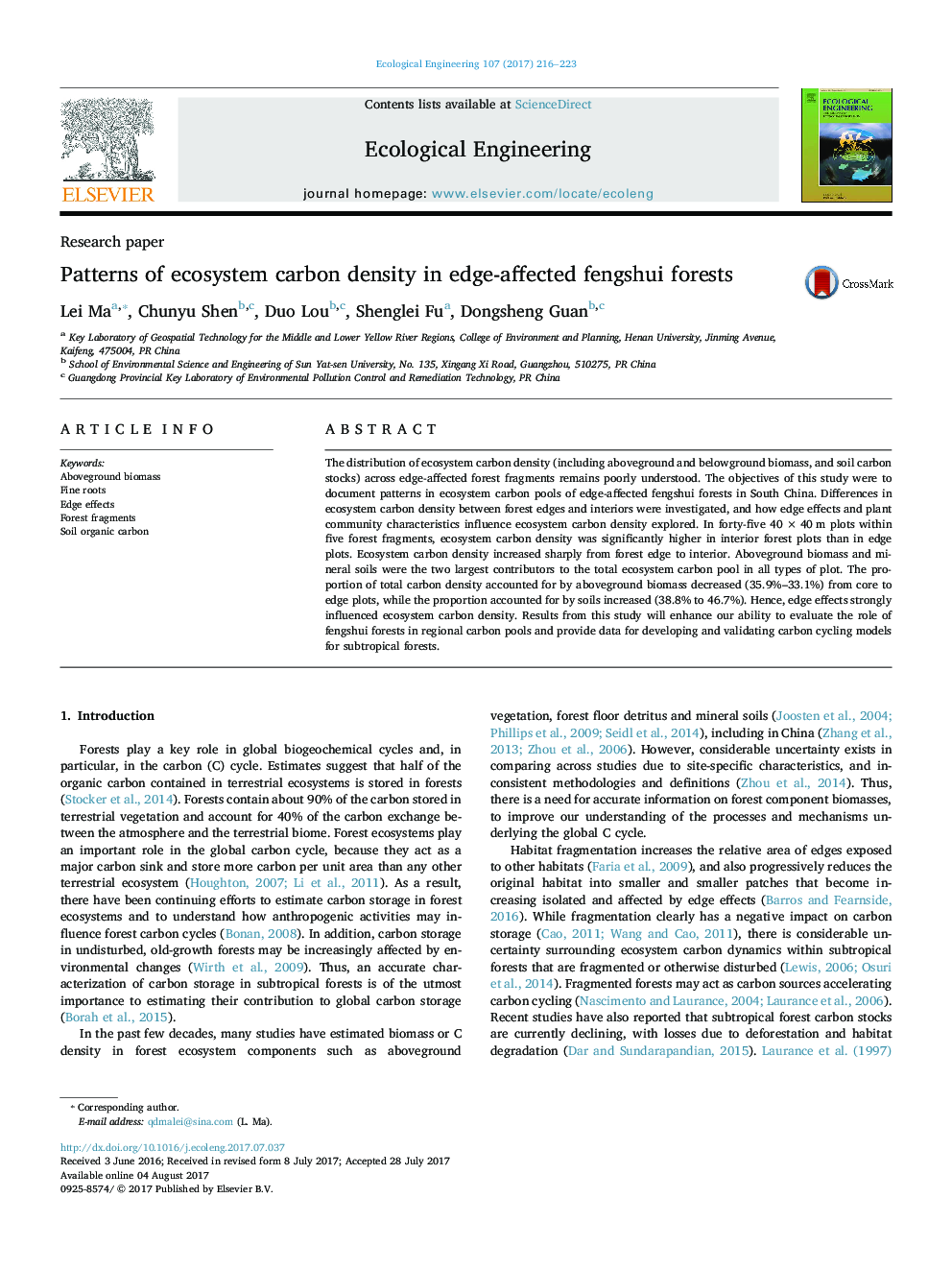| Article ID | Journal | Published Year | Pages | File Type |
|---|---|---|---|---|
| 5743677 | Ecological Engineering | 2017 | 8 Pages |
The distribution of ecosystem carbon density (including aboveground and belowground biomass, and soil carbon stocks) across edge-affected forest fragments remains poorly understood. The objectives of this study were to document patterns in ecosystem carbon pools of edge-affected fengshui forests in South China. Differences in ecosystem carbon density between forest edges and interiors were investigated, and how edge effects and plant community characteristics influence ecosystem carbon density explored. In forty-five 40Â ÃÂ 40Â m plots within five forest fragments, ecosystem carbon density was significantly higher in interior forest plots than in edge plots. Ecosystem carbon density increased sharply from forest edge to interior. Aboveground biomass and mineral soils were the two largest contributors to the total ecosystem carbon pool in all types of plot. The proportion of total carbon density accounted for by aboveground biomass decreased (35.9%-33.1%) from core to edge plots, while the proportion accounted for by soils increased (38.8% to 46.7%). Hence, edge effects strongly influenced ecosystem carbon density. Results from this study will enhance our ability to evaluate the role of fengshui forests in regional carbon pools and provide data for developing and validating carbon cycling models for subtropical forests.
